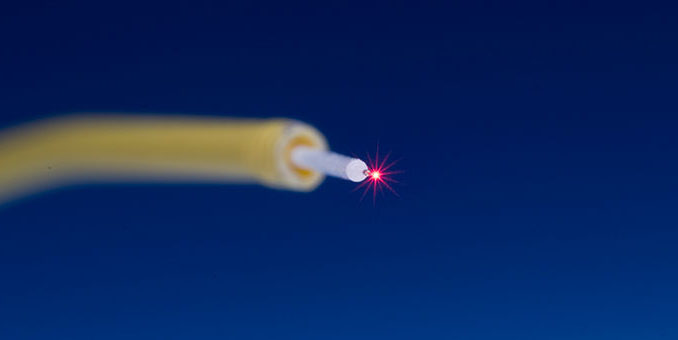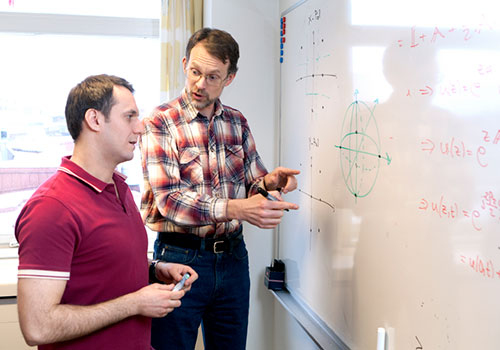
Views: 64
– The internet has arisen in the public debate as a climate hazard that causes carbon dioxide emissions as high as those originating from airplane travel. For five years, research at Chalmers has been underway to build models for energy-efficient data traffic. So far, the researchers have managed to reduce energy consumption to one tenth in specified areas.
Article by Chalmers: We are streaming movies and music, saving our pictures in the cloud, and are constantly connected to all the opportunities that the internet offers. The use of a regular smartphone requires about as much electricity as a refrigerator. However, the charging of the mobile phone only accounts for a negligible part of that energy. The rest of the electricity is not being used at our homes, but in data centres which are housing the data stored in the cloud, and during the transportation of data through fiber-optic cables, sometimes being hundreds of kilometers long.
An immense increase in data traffic
The amount of data transported via fiber-optic cables is increasing at an almost unimaginable rate. And so does the energy consumption from the data traffic. If nothing is done about the situation, within ten years, the internet alone will consume more electricity than is globally produced.
“It is a great challenge for society, and for us as researchers, to solve the equation of how to meet the demand for data capacity and performance, while keeping costs at a reasonable level and minimizing environmental impact. Not least, it requires a completely new way of optimizing the technical systems, says Peter Andrekson, Professor of photonics at Chalmers, who over the past five years has been the leader of a large research project with the aim to build a future model for energy-efficient optical fiber communication.
The intention of the project has been to locate the dominating energy consumers in the fiber-optic systems, and then to design and build a model that only uses one-tenth as much energy as the existing systems do. To succeed in this, a broad approach has been applied. Three different scientific perspectives have been joined together – optical hardware, electronic hardware and information theory, in order to perform coordination and transfer of data in the best possible way.
Many small energy thieves
Something that, at least to some extent, came as a surprise to the researchers was the fact that there are quite many small energy thieves with the potential of affecting the system – not a few large bottlenecks to tackle.
“Examples of such energy thieves are the signal processors in the transmitters and receivers in the optical systems”, says Erik Agrell, Professor of communication systems, who in this project has been responsible for developing mathematical models for designing new, more efficient types of transmitter and receiver algorithms. “Higher data transfer rates are requiring transmitters and receivers with the ability to handle stronger signals. However, with the help of error correcting codes, the requirements on the optical hardware can be partially lowered. On the other hand, it also consumes more energy, because the error correcting electronic hardware also runs on electricity. This is a concrete example of the need to find a balance between performance, cost and energy consumption in order to choose the best solution in every individual case.”
Within the framework of the project, chips containing error correcting code have been designed at Chalmers and then custom made in the USA. Thereafter, the chips have been tested to verify that the theoretical models and simulations of the power consumption are correct, also in practice.
Aims at reducing energy consumption to one tenth
The prerequisites for how to design the optimal system differ, among other things, depending on the distance that data is being transported. On one hand, the researchers have studied data communication over short distances, from 1 up to 500 meters, which occur, for example, in data centres and in network-based computation clusters. On the other hand, research has also been focused on larger optical systems, where traffic from many users simultaneously travel over distances up to hundreds of kilometers.
The project aim, to reduce energy consumption to one tenth compared to the models used today, seemed in advance to be quite tough.
“Within defined areas, we are able to state – not without pride – that we have managed to reach the levels that we aimed for,” says Peter Andrekson. “This applies not least to the power reduction thanks to the error correcting code. We have also received good feedback on the scientific results that we have presented. However, commercial companies are not particularly willing to contribute to this type of research. For competitive reasons, they keep their knowledge to themselves but on the other hand they don´t hesitate to apply the results from academia.”

Interdisciplinary approach
To present results that really optimize the system as a whole, and not just the constituent parts, the researchers have worked interdisciplinary across three research fields. In total, the project will result in five doctoral theses. The doctoral students have worked in pairs circulating across departmental borders – an approach that has been the basis for reaching research results in a broad perspective.
“To be honest, the process of fully understanding each other’s concepts within the project has been time-consuming. Even though we work within related fields of research, there are cultural differences between our specialist areas. Chalmers has a strength in the competence center FORCE, which coordinates research on fiber-optical communication”, says Peter Andrekson, who is also the director of this centre. ”We are now expanding, thanks to the move of the research group Optical Networks to Chalmers from KTH in Stockholm.”
Sustainable economizing of the internet
“To obtain an internet that is sustainable from a resource-based point of view, three different perspectives have to be applied, says Erik Agrell. Firstly, it is about developing and using communication technology that is energy efficient, and in this perspective we can contribute as researchers. Secondly, it is about raising awareness and creating incentives for every one of us as internet users not to be unnecessarily wasteful of data traffic. In this case, the individual person, as well as the society at large, and our politicians, have a shared responsibility to maintain sustainability. And lastly, it is important for the climate which energy sources are used in each country to produce the electricity – the less fossil fuels and the more renewables the better.
“I am convinced that we are moving towards a paradigm shift”, he concludes. “In a not-too-distant future, data transfer and heavy calculations on the internet will be seen as resources to economize with, not as free and unlimited assets.”
More about the research
The research has been funded by the Knut and Alice Wallenberg Foundation during five years starting from 2014, with 33,9 MSEK.
For more information, contact:
Peter Andrekson, Professor of photonics, Department of Microtechnology and Nanoscience, Chalmers University of Technology, peter.andrekson@chalmers.se
Erik Agrell, Professor of communication systems, Department of Electrical Engineering, Chalmers University of Technology, agrell@chalmers.se
Related article: New Infrastructure Will Enhance Privacy in Today’s Internet of Things IOT
Leave a Reply